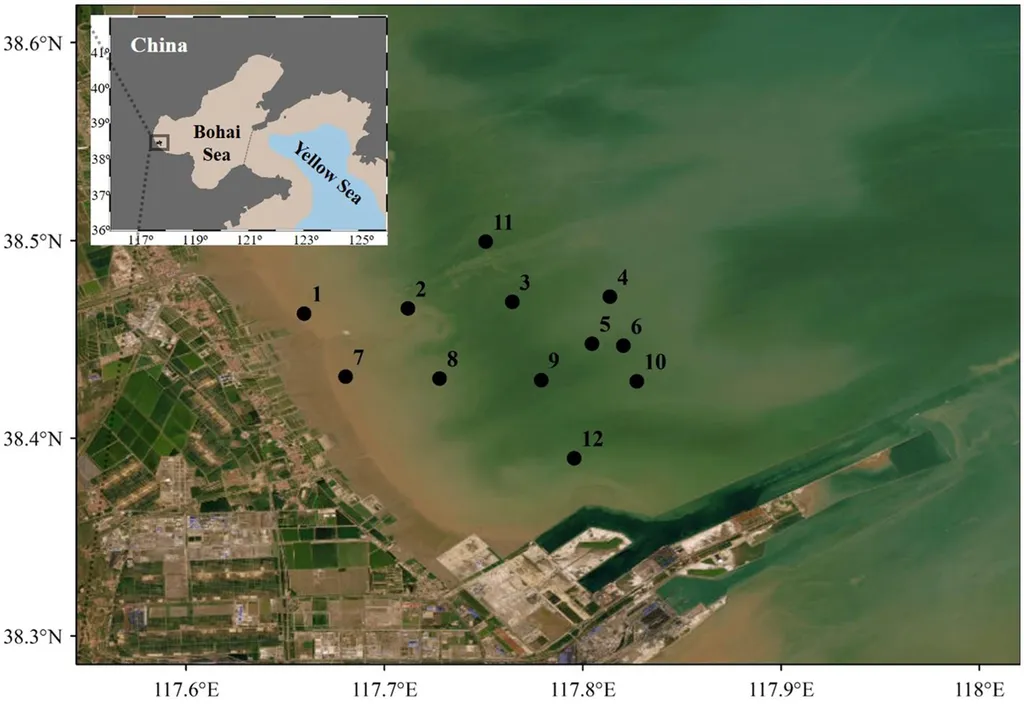In the vast, undulating waters of the Bohai Sea, a microscopic world teems with life, playing a pivotal role in the marine ecosystem’s health and stability. Zooplankton, the tiny organisms that drift with ocean currents, are the unsung heroes of the sea, serving as crucial food sources for commercially important fish and shrimp species. A recent study published in *Progress in Fishery Sciences* has shed light on the seasonal dynamics of these zooplankton communities, offering insights that could shape the future of marine ecosystem management and sustainable fisheries.
The research, led by ZHAO Jie from the State Key Laboratory of Mariculture Biobreeding and Sustainable Goods at the Yellow Sea Fisheries Research Institute, Chinese Academy of Fishery Sciences, delves into the community structure of zooplankton in the Bohai Sea during the summer and autumn of 2021. The findings reveal a complex interplay between environmental factors and zooplankton populations, with significant implications for the agriculture sector, particularly aquaculture and fisheries.
“The Bohai Sea is a vital spawning and feeding ground for numerous economically important species,” explains ZHAO Jie. “Understanding the seasonal variations in zooplankton communities is crucial for assessing the ecosystem’s health and promoting sustainable development.”
The study identified 41 zooplankton species, with a notable increase in warm-water species during autumn, leading to higher species richness compared to summer. Zooplankton abundance, however, was higher in summer, with high-abundance zones occurring in warmer, lower-salinity areas. The spatial distribution of zooplankton abundance mirrored that of phytoplankton, with primary concentrations shifting from Laizhou Bay and Bohai Bay in summer to the central and southern Bohai Sea in autumn.
The research also highlighted the dominant zooplankton species in each season. In summer, species like *Acartia hongi*, *Oithona similis*, and *Paracalanus parvus* took center stage, while autumn saw a shift, with species like *Ditrichocorycaeus affinis* and *Oikopleura dioica* gaining prominence. These dominant species exhibited significant correlations with environmental factors such as temperature, salinity, and phytoplankton abundance.
Redundancy analysis revealed that *P. parvus* and *A. omorii* were significantly positively correlated with phytoplankton abundance in summer. In autumn, *D. affinis* was positively correlated with temperature, and *O. dioica* exhibited a highly significant negative correlation with salinity. These findings underscore the intricate relationships between zooplankton communities and their environment.
The study’s implications for the agriculture sector, particularly aquaculture and fisheries, are profound. By understanding the seasonal dynamics of zooplankton communities, fisheries can better manage their resources, ensuring sustainable yields and minimizing ecological impact. Aquaculture operations can also benefit from this knowledge, optimizing feeding strategies and improving the overall health and productivity of farmed species.
Moreover, the research provides a scientific basis for the adaptive management of coastal ecosystems. By monitoring and understanding the changes in zooplankton communities, policymakers and stakeholders can make informed decisions that promote the sustainable development of marine ecosystems.
As we look to the future, this research paves the way for further studies on the seasonal variations in zooplankton communities and their relationships with environmental factors. It also highlights the need for integrated, ecosystem-based approaches to marine management, ensuring the health and productivity of our oceans for generations to come.
In the words of ZHAO Jie, “This study is just the beginning. There is still much to learn about the complex dynamics of zooplankton communities and their role in marine ecosystems. But with each new discovery, we move one step closer to a more sustainable and prosperous future for our oceans and the communities that depend on them.”
As the agriculture sector continues to evolve, the insights gleaned from this research will undoubtedly play a pivotal role in shaping its future, ensuring the sustainable development of marine resources and the prosperity of coastal communities.

